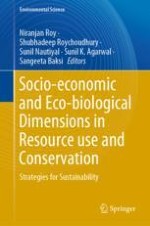This book presents the outcomes of the 2017 national workshop and international conference organized by CEENR of ISEC, Bengaluru and Assam University Silchar. Addressing the threats to biodiversity and sustainable development resulting from the impacts of human induced pressures on ecosystems and global-warming-driven climate change is a major challenge. It requires increased knowledge and an enhanced information base in order to devise local policies to improve the adaptive capacity of vulnerable socio-ecological systems in developing countries. In this context, the book presents research that has the potential to benefit the environment and empower communities. It appeals to researchers investigating diverse aspects of socio-ecological-biological systems to create strategies for resource use, conservation and management to ensure sustainability.
